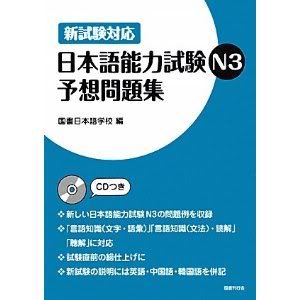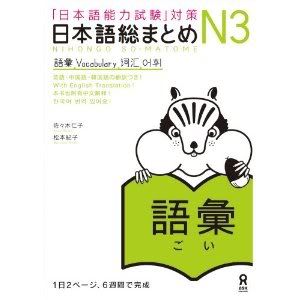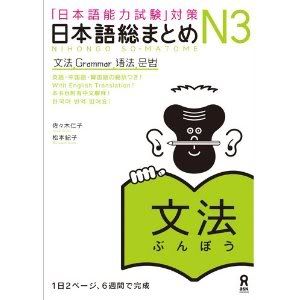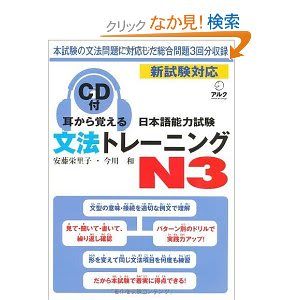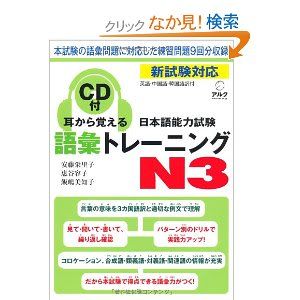みなさん、こんにちは!
JLPTのN1~N3の合格基準点が発表されました。
JLPT from N1 to N3 minimum acceptable scores has been announced.(Seems like English site has not been ready yet.)
7月の結果は9月3日に発送するそうです。
July result will be sent off on Sep. 3rd.
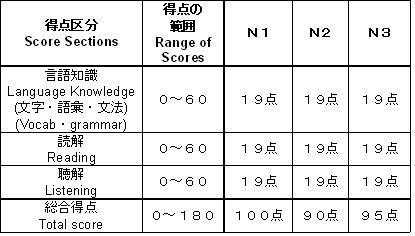 全科目を受験した人を対象に、総合得点と、各得点区分の基準点の二つで合否を判定し、受験者全員に合否結果通知書をもって通知します。
なお、得点区分の得点が一つでも基準点に達していない場合は、総合得点がどんなに高くても不合格になります。
Web Site
Subjecting those who completed all test sections, pass or fail will be determined by the scores for both total as well as each scoring section and all examinees will receive their score reports of the Test.
The requirements for passing have changed so that examinees must now exceed the minimum acceptable score for all test sections.
Failure to exceed the minimum acceptable score (to be announced) in any scoring sections will result in a fail for the entire test, even if your total score is above the minimum acceptable score.
Web Site
全科目を受験した人を対象に、総合得点と、各得点区分の基準点の二つで合否を判定し、受験者全員に合否結果通知書をもって通知します。
なお、得点区分の得点が一つでも基準点に達していない場合は、総合得点がどんなに高くても不合格になります。
Web Site
Subjecting those who completed all test sections, pass or fail will be determined by the scores for both total as well as each scoring section and all examinees will receive their score reports of the Test.
The requirements for passing have changed so that examinees must now exceed the minimum acceptable score for all test sections.
Failure to exceed the minimum acceptable score (to be announced) in any scoring sections will result in a fail for the entire test, even if your total score is above the minimum acceptable score.
Web Site
みなさん、こんにちは!
 Application period of JLPT (Japanese Language Proficiency Test) for this December 5th (Sun) has been started from yesterday, August 27th (Fri).
Its due date is October 1st (Fri), exact in 5 weeks.
Don’t forget to apply it!
The number of inquires of JLPT preparation courses are increasing.
Three more months!
Gambarimasho!
今年12月5日(日)のJLPT試験の申し込みが昨日8月27日(金)から始まりました。
締め切りは5週間後の10月1日(金)です。
忘れないようにしましょう!
私の学校にも試験対策コースについての問い合わせが増えてきました。
あと3カ月ですね!
がんばりましょう!
- words & phrases -
今年(ことし): this year
12月(がつ)5日(いつか): December 5th
試験(しけん): exam
申(もう)し込(こ)み: apply, application
昨日(きのう): yesterday
始(はじ)まりました: started
締(し)め切(き)り: due date
5週間(しゅうかん)後(ご): in 5 weeks, 5 weeks later
忘(わす)れないように: don’t forget
私(わたし)の学校(がっこう): my school (the Japanese school that I am working for in Tokyo)
試験対策(たいさく)コース: exam preparation course
問(と)い合(あ)わせ: inquiry
増(ふ)えてきました: increasing
あと3カ月(さんかげつ): three more months
Application period of JLPT (Japanese Language Proficiency Test) for this December 5th (Sun) has been started from yesterday, August 27th (Fri).
Its due date is October 1st (Fri), exact in 5 weeks.
Don’t forget to apply it!
The number of inquires of JLPT preparation courses are increasing.
Three more months!
Gambarimasho!
今年12月5日(日)のJLPT試験の申し込みが昨日8月27日(金)から始まりました。
締め切りは5週間後の10月1日(金)です。
忘れないようにしましょう!
私の学校にも試験対策コースについての問い合わせが増えてきました。
あと3カ月ですね!
がんばりましょう!
- words & phrases -
今年(ことし): this year
12月(がつ)5日(いつか): December 5th
試験(しけん): exam
申(もう)し込(こ)み: apply, application
昨日(きのう): yesterday
始(はじ)まりました: started
締(し)め切(き)り: due date
5週間(しゅうかん)後(ご): in 5 weeks, 5 weeks later
忘(わす)れないように: don’t forget
私(わたし)の学校(がっこう): my school (the Japanese school that I am working for in Tokyo)
試験対策(たいさく)コース: exam preparation course
問(と)い合(あ)わせ: inquiry
増(ふ)えてきました: increasing
あと3カ月(さんかげつ): three more months
みなさん、こんにちは!
I wrote in my former entry “you need to pull your level up to the point “to be able to make sentences” not only “to be able to understand when you listen/read”.
What would it be good practices for it?
First of all, when you learn a new grammar, make sentences expressing about yourself.
You would forget soon if you only read the sentences on the book and repeat your teacher.
And compositions are good practices too.
Use the grammars and the situations you have studied in the class and write a composition about your own version.
Gambatte kudasai!
前のエントリーで
「新しいJLPTでは、「聞いて・読んでわかる」だけではなく、「自分で文が作れる」というレベルが必要だと思います。」と書きました。
自分で文が作れるようになるための練習はどうすればいいのでしょうか。
まず、新しい文法を勉強したら、自分のことをその文を使って言ってみましょう。
教科書に書いてある文を読んで先生の発音をリピートしただけでは、すぐに忘れてしまいます。
また作文はとてもいい練習だと思います。
授業で勉強した新しい文法やその文法が使われている状況で、「自分バージョン」を設定して作文をします。
がんばってくださいね!
- words & phrase -
前(まえ)の: former
新(あたら)しいJLPT: New JLPT
聞(き)いて・読(よ)んでわかる: understand when you listen/read
自分(じぶん)で文(ぶん)が作(つく)れる: can make sentences by oneself
必要(ひつよう)だと思(おも)います: I think it needs to
練習(れんしゅう): practice
まず: first of all
新(あたら)しい文法(ぶんぽう): new grammars
自分のこと: about oneself
その文を使(つか)って言(い)ってみましょう: say it using the sentences
教科書(きょうかしょ): textbooks
書(か)いてある: written
先生(せんせい)の発音(はつおん): teacher’s pronunciation
だけ: only
すぐに忘(わす)れてしまいます: will forget soon (with disappointment feeling)
作文(さくぶん): composition
授業(じゅぎょう): lesson, class
状況(じょうきょう): situation
設定(せってい)する: to set up
みなさん、こんにちは!
I have been thinking of New JLPT.
You could pass with the level “you can understand when you listen/read” for former JLPT.
Actually there were people who passed 1kyu or 2kyu but their conversational levels were 3kyu.
I think you need to pull your level up to the point “to be able to make sentences” not only “to be able to understand when you listen/read”.
For example, new style question which is to put the words into correct order, you would probably understand when you read the full sentence afterwards because even if you do not understand all of the words or grammars, you can guess what it means from the whole sentence.
When you make (sort the words) a sentence, it is required to understand the words meanings, words connecting, or idiomatic expressions and so on.
When you are having conversation, I think listening is not that difficult comparing to speaking, it is the same thing.
For the new level N3, I think you need to master all of the grammars and vocabulary of old 3kyu (new N4) and become to make any sentences comfortably like your own language.
And more over, you also need to add new grammars, vocabulary and Kanji between the old 2kyu and 3kyu.
Old 3kyu (new N4) is said daily conversational level, you should be able to have conversations with native speakers about daily topics.
Conversation needs both to listen and to speak.
Gambatte kudasai!
新しいJLPTについて考えました。
今までは「聞いて・読んでわかる」というレベルで合格できました。
実際1級や2級に合格していても、会話のレベルは3級ぐらいということもよくありました。
新しいJLPTでは、「聞いて・読んでわかる」だけではなく、「自分で文が作れる」というレベルが必要だと思います。
例えば、並べ替えの問題で、できあがった文はわかると思います。 それは1つの文の中でわからない表現や文法があっても全体を聞いてGuessできるからです。
でも自分で正しく並べるということは、言葉の意味、接続、慣用表現などがわかっていなければできません。
会話のとき、聞くのはそんなに難しくないけど、話すのは難しいですね。同じことです。
新しいN3の場合、古い3級(新しいN4)までの文法を使って、自分で簡単に自分の国の言葉で話すように文を作ることができるぐらいにマスターしなければならないと思います。
さらに古い3級と2級の間の文法や語彙・漢字も勉強しなければなりません。
古い3級(新しいN4)は日常会話レベルですから、ネイティブの日本人と日常のことについて会話ができなければなりません。
会話は聞くことと話すこと両方必要です。
がんばってください。
みなさん、こんにちは!
昨日とおとといは雨が降って少し涼しかったのですが、また明日から暑くなるそうです。
It was not that hot yesterday and the day before since it rained but it seems like will be hot again from tomorrow.
忙しくてBlogをアップできなくてごめんなさい。
Sorry not to be able to updated my blog since I have been very busy.
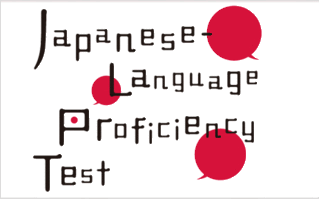 JLPT Web Site
7月13日にJLPTのサイトがリニューアルしたそうです。
JLPT Web Site renewed on July 13th.
こちらがリンクです。
Here is the link.
問題例もこちらにあります。
Sample questions are here.
4つのポイント
4 new points
みなさん、がんばってくださいね!
Gambatte ne!
JLPT Web Site
7月13日にJLPTのサイトがリニューアルしたそうです。
JLPT Web Site renewed on July 13th.
こちらがリンクです。
Here is the link.
問題例もこちらにあります。
Sample questions are here.
4つのポイント
4 new points
みなさん、がんばってくださいね!
Gambatte ne!
みなさん、こんにちは!
少しだけですが新しいJLPTを受けた生徒さんからの情報です。
I heard something from our students who took the New JLPT.
① N1聴解は「絵のある問題」がなかった
There were no listening quizes with pictures.
② N3を受けた人は12月にN3をターゲットにしている人が多かった
There were many people who took N3 aimed N3 in this December.
③ N3の聴解は思っていたほど難しくなかった
N3 listening was not difficult as they thought.
④ N2の聴解はとても易しかった
N2 listening was super easy.
JLPTについてインターネットで検索していたら、テストの問題と回答が掲載されている中国語のサイトを見つけました。
I found a Chinese site which uploads JLPT questions and answers while I was surfing the Internet.
問題用紙は持ち帰れないはずなのでびっくりしました。
I was surprised as I think questions sheets are not allowed to bring home…
こちらがそのサイトのリンクです。
N1 : 文法 読解 聴解 MP3-1 MP3-2
N2 : 文字・語彙 文法 読解 聴解 MP3
N3 : 言語知識 文法 読解 聴解 MP3-1 MP3-2
みなさん、おはようございます!
Today is the day of JLPT.
Please stay calm to get the best from yourself.
It is a shame if you miswrite knowing correct answers.
Don’t forget to bring the exam admission card, pencils, erasers, watch and others with you.
Gambatte kudasai ne! Good luck!
今日はJLPTの日ですね。
自分の力を100%出せるように落ち着いてテストをしてくださいね。
答えがわかっているのに、回答用紙に書き間違えたりしたらもったいないですから。
筆記用具、受験票、時計など忘れ物をしないように。
がんばってくださいね!
みなさん、こんにちは!
The first new JLPT will be held on this Sunday.
Its passing score will be announced in September.
It must be hard especially for you from Uruguay, Ghana, Argentina, Germany, Netherlands, Chile, Paraguay and Spain as there are the World Cup games on Friday and Saturday.
For one who takes N1 or N2, Vocabulary/Grammar/Reading are in the same part and have 110min (N1) and 105min (N2).
All of you have strong and weak points, also the scores for reading and grammar is not the same, there is no common “the best way” for everyone.
Start from what you are good at.
It is going to be a fight against time.
It must be very hard to take the test not to lose your concentration for about 2 hours.
If possible, go to bed early (not to watch the succor games ^^) the day before, eat breakfast a lot, also eat power bar, banana or chocolate during the break for brain energy charge.
Because another one hour for listening comprehension is waiting for you.
Gambatte kudasai!
いよいよ今度の日曜日、最初の新しいJLPTが行われます。
合格基準は9月に発表です。
でも、ウルグアイ、ガーナ、アルゼンチン、ドイツ、オランダ、チリ、パラグアイ、スペインの方は金曜日と土曜日にワールドカップの試合があるので、大変ですね!
N1とN2を受験する方、文字・語彙・文法・読解が1つに含まれていて、110分(N1),105分(N2)となっています。
みなさん得意・不得意があるし、読解1問と文法1問ではスコアも違うので、みなさんに共通する「一番いい方法」はありません。
得意なところから始めましょう。
とにかく時間との戦いです。
約2時間集中力を切らさないでテストを受けるのはとても大変だと思います。
できれば前の日は(サッカーを見ないで^^)早く寝て、当日は朝ごはんをしっかり食べて、休憩時間にもパワーバーやバナナやチョコレートなどを食べて頭にエネルギーを送りましょう。
さらに約1時間の聴解がありますから。
がんばってくださいね!
- words & phrases -
いよいよ: finally
今度(こんど)の日曜日(にちようび): this Sunday
合格(ごうかく)基準(きじゅん): passing score/mark
行(おこな)われます: be held
試合(しあい): match, game
受験(じゅけん)する方(かた): one who takes an exam
含(ふく)まれている: be included
得意(とくい)・不得意(ふとくい): likes and dislikes, strong and weak points
~し~ので: reason connective
共通(きょうつう)する: common
一番(いちばん)いい方法(ほうほう): the best way/method
とにかく: anyway
時間(じかん)との戦(たたか)い: fight/battle/struggle against time
集中力(しゅうちゅうりょく): concentration, concentration power
切(き)らさないで: not to lose
テストを受(う)ける: take a test
とても大変(たいへん)だ: very hard
できれば: if you can
当日(とうじつ): on the day
しっかり食(た)べる: eat a lot, eat a full meal,
休憩時間(きゅうけいじかん): break time
みなさん、こんにちは。
A student who took a mock exam told me that Giongo・Gitaigo (onomatopoeic) in the test.
I know you do not have much time but please see the online dictionary hope it could help you.
Common japanese onomatopoeia word sounds found in manga
Macaronomatopoeia
N2模擬試験を受けた生徒さんからの情報です。
擬音語・擬態語がでたそうです。
あまり時間がないと思いますが、オンラインの辞書を見つけましたので参考にしてください。
- words & phrases -
模擬(もぎ)試験(しけん): mock exam
情報(じょうほう): information
擬音語(ぎおんご)・擬態語(ぎたいご): onomatopoeic
辞書(じしょ): dictionary
参考(さんこう)にする: consult
みなさん、こんにちは!
JLPT (N1, N2 and N3) is on next Sunday.
If you would ask me what effective study methods within a week is, it is very difficult to answer because there is only a week left but I think it would be “Kanji study” .
Kanji is to expand your vocabulary not only for JLPT Kanji test.
Knowing lots of vocabulary helps listening and reading comprehension.
I really understand study Kanji is hard.
I think study Kanji is very systematic, effective and efficient to increase vocabulary comparing English for example.
今度の日曜日はJLPT(N1、N2、N3)のテストですね!
「あと1週間」でできる効果的な勉強はなんですか、と聞かれたら「1週間しかない」のでとても難しいですが、やはり漢字を復習するのがいいでしょう。
漢字の勉強はJLPTの中の「漢字のテスト」のためだけではなく、語彙を増やすためです。
語彙をたくさん知っていると、聴解・読解も楽になります。
漢字の勉強は大変ですが、例えば英語の語彙を増やすのに比べてシステマチックにそして効果的・効率的に勉強できると思います。
- words & phrases -
今度(こんど)の日曜日(にちようび): next Sunday
効果的(こうかてき)な: efficient, economical
勉強(べんきょう): study
聞(き)かれたら: if I was asked
しかない(しか+negative): emphasizing the amount/quantity is very little
難(むずか)しい: difficult
やはり: as was expected
復習(ふくしゅう)する: review
語彙(ごい): vocabulary
増(ふ)やす: increase
聴解(ちょうかい): listening comprehension
読解(どっかい): reading comprehension
楽(らく)になる: it will become easy
大変(たいへん)です: hard
例(たと)えば: for example
~に比(くら)べて: to compare to ~
システマチック: systematic
効率的(こうりつてき): efficient
みなさん、こんにちは!
今日は新しいJLPTのリスニングについて書きます。
今年から新しい方法のリスニングがあります。
I will write about the New JLPT Listening today.
There are some new listening stiles will be started from this year.
①先にある程度まとまった会話などを聞いてから、質問を聞きます。
それから答えを4つ聞いて正しいものを選びます。
例えば(N3レベル)、ホテルにチェックインをするときにフロントの人からベッドメイクや掃除について曜日や時間について言われます。質問はこのお客さんが○○曜日に△△をしたいときにはどうするか、というものです。それから答えを4つ聞きます。
(1) Listen first some dialogue or paragraph then given a question.
Four questions are followed by.
* example(N3 level)
When a customer checks in a hotel, she is told about days and times of bed making and room cleaning at a front desk.
Its question is if this customer wants to ask △△ on ○○day, what she needs to do.
Then listen to the four answers.
②短い文を聞いて、それに対する正しい答えを4つの中から選びます。
例えば(N3レベル)「電車また遅れてるね」を聞いて「また?」などの答えを聞いて選びます。
(2) Listen a short sentence then choose a correct response for it.
* example (N3 level)
First you hear “The train delays.” then listen answers like “not again” .
上の例は「N3聞く」という新しいテキストからです。
学校のレッスンの時①の問題を少し聞きましたが、とても難しかったです。
質問がわかりませんから、全部聞かなければならないからです。
The above examples are from a new textbook “N3 listening comprehension”
I listened the (1) at my school during my class, it was very difficult.
Because you do not know what you are asked prior so you need to listen everything carefully.
メモを書いているとその間聞くことに集中できません。
大切だと思うこと、例えば時間、日にちや物の名前などを早く書く練習をしましょう。
ひらがなよりローマ字の方が早く書けるかもしれません。
質問も4つあるのでメモが必要です。
新しい方法のリスニングを練習用にテキストを買った方がいいかもしれません。
You cannot concentrate on listening while you are taking a note.
Maybe you should practice writeng something quickly, for example, days and time or things names.
You could write faster in Roma-ji rather than Hiragana.
There are four questions so you would also need to write them down.
It would be better to buy some new textbooks which cover the new stiles listening parts.
実はこのテキストのN3レベルは難しすぎると感じました。
Actually I felt this N3 level listening textbook was too difficult.
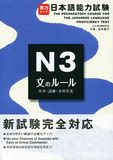 Tsutaya Online Shop
(not in Amazon yet)
Tsutaya Online Shop
(not in Amazon yet)
みなさん、こんにちは!
I have called to JLPT organization to know about New JLPT passing score because it has not been announced on its Web Site.
They said it would be announced in September.
They also said that they could not tell if it is the same level of before (60%, 70% for 1kyu) or not.
I will write it on my Blog when I get some more information.
新しいJLPTの合格基準点がWeb上で発表がされないので、電話して聞きました。
合格基準点は9月に発表になるそうです。
今まで(60%、1級は70%)と同じぐらいかどうかも今答えることができないそうです。
また新しい情報がわかったらBlogに書きます。
- words & phrase -
新(あたら)しいJLPT: New JLPT
合格(ごうかく)基準点(きじゅんてん): passing/acceptable mark/level/score
Web上(じょう): on the Web site
発表(はっぴょう)されない: has not been announced
電話(でんわ)して聞(き)きました: called to check
同(おな)じぐらいかどうかも: also if it is the same score or not
~そうです: I heard that, they said that
新しい情報(じょうほう)がわかったら: when I found out new information
みなさん、こんにちは!
May ends soon.
There are only a month till the July JLPT.
I go to the JLPT Web Site everyday and also today to check if they announced the passing line but they have not.
We really want to know it!
 JLPT New Logo
5月ももうすぐ終わりですね。
7月のJLPTまであと1カ月ですね。
JLPTのWeb Siteを毎日チェックしていますが、今日もまだ合格ラインが発表されていません。
早く知りたいですねー!
- words & phrases -
もうすぐ: soon
終(お)わり: end, finish
あと1カ月(かげつ): one more month
毎日(まいにち): everyday
今日(きょう)も: today also
合格(ごうかく)ライン: passing line
発表(はっぴょう)されていません: not announced yet
早(はや)く知(し)りたい: want to know soon
JLPT New Logo
5月ももうすぐ終わりですね。
7月のJLPTまであと1カ月ですね。
JLPTのWeb Siteを毎日チェックしていますが、今日もまだ合格ラインが発表されていません。
早く知りたいですねー!
- words & phrases -
もうすぐ: soon
終(お)わり: end, finish
あと1カ月(かげつ): one more month
毎日(まいにち): everyday
今日(きょう)も: today also
合格(ごうかく)ライン: passing line
発表(はっぴょう)されていません: not announced yet
早(はや)く知(し)りたい: want to know soon
みなさん、こんにちは!
2010 July JLPT, the exam will start in the afternoon!
Maybe you could study till late at night the day before for overnight cramming.
Its passing mark still has not been announced yet, the application starts from March 26th till April 30th.
For JLPT July exam is N1 – N3 only, will be held in Japan and some oversea countries.
http://www.jees.or.jp/jlpt/en/jlpt_guide_2010_1st_e.html
今年7月のJLPTの試験時間は午後になりましたね!
前日一夜漬けして遅くまで勉強していても大丈夫かも?
まだ合格点が発表になっていませんが、申し込みは3月26日から4月30日までです。
7月のテストは、レベルがN1~N3で、日本国内と一部の海外の国だけです。
がんばってください!
http://www.jees.or.jp/jlpt/jlpt_guide_2010_1st.html
- words & phrases -
試験(しけん)時間(じかん): exam schedule time
前日(ぜんじつ): the day before
一夜漬(いちやづ)け: overnight cramming, hasty cramming
遅(おそ)くまで: till late at night
大丈夫(だいじょうぶ)かも: omitted かもしれません, maybe it would be ok
合格点(ごうかくてん): passing mark
発表(はっぴょう)になっていません: has not been announced yet
申(もう)し込(こ)み: to apply, application
日本国内(にほんこくない): in Japan
一部(いちぶ)の海外(かいがい)の国(くに): some oversea countries
みなさん、こんにちは!
JLPT 2010の新しい情報です。
JLPT 2010 New Information.
Publishing "New Japanese-Language Proficiency Test Guidebook", "New Japanese-Language Proficiency Test Guidebook: An Executive Summary (Japanese/English version)", and "New Japanese-Language Proficiency Test Sample Questions"
The Japan Foundation and Japan Educational Exchanges and Services (JEES) are pleased to inform you of the publication of the New JLPT.
We have released the following materials to indicate what the new JLPT will be like.
The following items are available on this JLPT official website.
Please freely download and make use of them, according to your needs.
(1)"ATARASHII NIHONGO NOURYOKU SHIKEN Guidebook" (Japanese only)
(New Japanese-Language Proficiency Test Guidebook)
(2)-1 "ATARASHII NIHONGO NOURYOKU SHIKEN Guidebook GAIYOOBAN"
(New Japanese-Language Proficiency Test Guidebook: An Executive Summary, Japanese version)
(2)-2 "New Japanese-Language Proficiency Test Guidebook: An Executive Summary, English version)
(3) "ATARASHII NIHONGO NOURYOKU SHIKEN MONDAIREI SYUU"
(New Japanese-Language Proficiency Test Sample Questions) (Japanese only)
The (2)-1 and (2)-2 "New Japanese-Language Proficiency Test Guidebook: An Executive Summary" provides a brief overview of the New JLPT.
The (1) "New Japanese-Language Proficiency Test Guidebook" is for more details about New JLPT.
In addition, sample questions for each level, for each type of test items are released in the (3) 2New Japanese-Language Proficiency Test Sample Questions".
In addition, the new JLPT booklets below have been recently published by BONJINSHA:.
* "New Japanese-Language Proficiency Test Guidebook:
An Executive Summary, and Sample Questions for N1, N2 and N3" with a CD of the Listening Section.
Price: 945 Japanese Yen, tax included.
* "New Japanese-Language Proficiency Test Guidebook:
An Executive Summary, and Sample Questions for N4 and N5" with a CD of the Listening Section.
Price: 840 Japanese Yen, tax included.
As for the above-mentioned material (3), a new collection of sample questions will be available in 2012 which includes test items taken from actual tests conducted in 2010 and 2011.
It will have the same number of test items as the actual tests.
After that, a workbook will be published periodically, consisting of past conducted test items.
 新(あたら)しい「日本語(にほんご)能力(のうりょく)試験(しけん)」について、その全体像(ぜんたいぞう)を次(つぎ)のとおりお知(し)らせいたします。
これまで試験(しけん)問題(もんだい)は非(ひ)公開(こうかい)との方針(ほうしん)で検討(けんとう)してまいりましたが、受験者(じゅけんしゃ)・教育(きょういく)関係者(かんけいしゃ)のご要望(ようぼう)も考慮(こうりょ)し、問題(もんだい)例(れい)集(しゅう)も作成(さくせい)いたします。
・ 『新(あたら)しい「日本語(にほんご)能力(のうりょく)試験(しけん)」ガイドブック』、同(どう)ガイドブック『概要(がいよう)版(ばん)』、及(およ)び『問題(もんだい)例(れい)集(しゅう)』を本(ほん)ウェブ上(じょう)に掲載(けいさい)いたします。必要(ひつよう)に応(おう)じてダウンロードし、ご利用(りよう)ください。
・ 現行(げんこう)試験(しけん)との比較(ひかく)を含(ふく)め、新(しん)試験(しけん)について詳(くわ)しくお知(し)りになりたい方(かた)は『ガイドブック』を、新(しん)試験(しけん)の概要(がいよう)をお知(し)りになりたい方(かた)は『概要(がいよう)版(ばん)』をご覧(らん)ください。
具体的(ぐたいてき)な試験(しけん)問題(もんだい)例(れい)についてお知(し)りになりたい方(かた)は、『問題(もんだい)例(れい)集(しゅう)』をご覧(らん)ください。
・『新(あたら)しい「日本語(にほんご)能力(のうりょく)試験(しけん)」ガイドブック概要版(がいようばん)と問題(もんだい)例(れい)集(しゅう)』は、N1-N3編(へん)(税込(ぜいこみ)945円(えん))とN4-N5編(へん)(税込(ぜいこみ)840円(えん))をそれぞれ(株(かぶ))凡人社(ぼんじんしゃ)より販売(はんばい)しています。
・ 2012年(ねん)には、2010年(ねん)と2011年(ねん)に出題(しゅつだい)した問題(もんだい)の一部(いちぶ)をこの『新(あたら)しい「日本語(にほんご)能力(のうりょく)試験(しけん)」問題(もんだい)例(れい)集(しゅう)』に加(くわ)えて、試験(しけん)1回(かい)分(ぶん)の問題数(もんだいすう)に相当(そうとう)する形(かたち)で新(あら)たに問題(もんだい)例(れい)集(しゅう)として発行(はっこう)します。
その後(ご)は一定(いってい)期間(きかん)ごとに、実際(じっさい)に出題(しゅつだい)した試験(しけん)問題(もんだい)を使(つか)って問題集(もんだいしゅう)を発行(はっこう)していく予定(よてい)です。
新(あたら)しい「日本語(にほんご)能力(のうりょく)試験(しけん)」について、その全体像(ぜんたいぞう)を次(つぎ)のとおりお知(し)らせいたします。
これまで試験(しけん)問題(もんだい)は非(ひ)公開(こうかい)との方針(ほうしん)で検討(けんとう)してまいりましたが、受験者(じゅけんしゃ)・教育(きょういく)関係者(かんけいしゃ)のご要望(ようぼう)も考慮(こうりょ)し、問題(もんだい)例(れい)集(しゅう)も作成(さくせい)いたします。
・ 『新(あたら)しい「日本語(にほんご)能力(のうりょく)試験(しけん)」ガイドブック』、同(どう)ガイドブック『概要(がいよう)版(ばん)』、及(およ)び『問題(もんだい)例(れい)集(しゅう)』を本(ほん)ウェブ上(じょう)に掲載(けいさい)いたします。必要(ひつよう)に応(おう)じてダウンロードし、ご利用(りよう)ください。
・ 現行(げんこう)試験(しけん)との比較(ひかく)を含(ふく)め、新(しん)試験(しけん)について詳(くわ)しくお知(し)りになりたい方(かた)は『ガイドブック』を、新(しん)試験(しけん)の概要(がいよう)をお知(し)りになりたい方(かた)は『概要(がいよう)版(ばん)』をご覧(らん)ください。
具体的(ぐたいてき)な試験(しけん)問題(もんだい)例(れい)についてお知(し)りになりたい方(かた)は、『問題(もんだい)例(れい)集(しゅう)』をご覧(らん)ください。
・『新(あたら)しい「日本語(にほんご)能力(のうりょく)試験(しけん)」ガイドブック概要版(がいようばん)と問題(もんだい)例(れい)集(しゅう)』は、N1-N3編(へん)(税込(ぜいこみ)945円(えん))とN4-N5編(へん)(税込(ぜいこみ)840円(えん))をそれぞれ(株(かぶ))凡人社(ぼんじんしゃ)より販売(はんばい)しています。
・ 2012年(ねん)には、2010年(ねん)と2011年(ねん)に出題(しゅつだい)した問題(もんだい)の一部(いちぶ)をこの『新(あたら)しい「日本語(にほんご)能力(のうりょく)試験(しけん)」問題(もんだい)例(れい)集(しゅう)』に加(くわ)えて、試験(しけん)1回(かい)分(ぶん)の問題数(もんだいすう)に相当(そうとう)する形(かたち)で新(あら)たに問題(もんだい)例(れい)集(しゅう)として発行(はっこう)します。
その後(ご)は一定(いってい)期間(きかん)ごとに、実際(じっさい)に出題(しゅつだい)した試験(しけん)問題(もんだい)を使(つか)って問題集(もんだいしゅう)を発行(はっこう)していく予定(よてい)です。
みなさん、こんにちは!
2009 Dec JLPT result has been sent, I thinkg everybody has started to move for this year’s JLPT.
The problem is we still do not know (1) its pass line and (2) N3 details.
Regarding the pass line, each skills such as grammars, reading and listening comprehensions is required to above the certain line not only pass total score.
Therefore, it could be said the new JLPT gets more difficult to pass because of it.
Ok, then, what will we do for preparing N3?
Before talking about N3, let’s see old 3kyu.
When your level is at around finished textbooks, Minna no Nihongo 1&2, Japanese for Busy People 1-3, or Genki 1&2, you could pass 3kyu.
However, 3kyu did not focus on some difficult parts like Keigo, Ukemi (passive), Shieki (causative) or Shieki-Ukemi (causative-passive).
We, the teachers at our school, did actually give some advice if someone struggled with those difficult parts said that just ignored them if it was too difficult because there were only one or two questions.
It used to be for one who passed 3kyu then moved to 2kyu, those parts would become small matters comparing to study about 1000 Kanji or over 170 grammar points.
Like someone who aimed 3kyu, the particles were not special grammar points anymore which were the main grammar points for 4kyu.
So we presume that Keigo, Ukemi or Shieki and so on which are usually in a latter half of Minnano Nihongo 2 or JBP 3 would become important grammar points.
I came across a study book for N3 in Amazon site, have not checked it yet though.
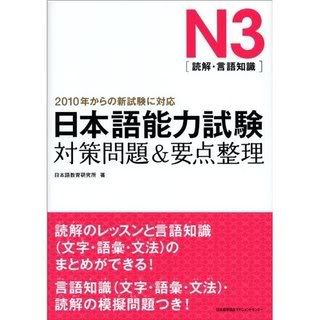 Amazon
-> additonal information : http://japanesewithmie.blogspot.com/2010/04/jlpt-n3-textbooks.html
Amazon
-> additonal information : http://japanesewithmie.blogspot.com/2010/04/jlpt-n3-textbooks.html
 JLPT
JLPT
みなさん、こんにちは!
Today I will write about New JLPT (Japanese Language Proficiency Test).
As you would probably know that its test formats will be revised from this year, 2010.
The biggest different point is there are 5 levels for new JLPT, N1- N5 (before 4 levels, 1kyu-4kyu) and N3 is a new level which is in between old 3kyu (N4) and 2kyu (N2).
And the new one requires to get each skills (like grammar, listening, reading) to be above the certain points plus not to mention total score is also need to excess to pass (its details will be informed soon from JLPT organization).
Therefore, probably the new JLPT gets more difficult to pass than before.
Because, with the former exam, you could pass if you got total 60% (70% for 1kyu) which means, for example, even if you got lower score with reading comprehension you could still pass if your listening level was high enough to cover your reading section.
Ok, now here is the biggest problem for new JLPT, especially for N3 :
JLPT organization will not to sell “past exam copies” for any levels from this year.
And more over, there are no textbooks or study books for preparing the new exam till this late summer or autumn.
Because publishers need to wait this July’s exam (only for N1-N3) to know what the text will be like.
JLPT organization uploaded some samples of each level on its Web Site, but it is not enough of course.
So if you are aiming N3 this July, it is going to be a big challenge! with no information, no books!
がんばって!








